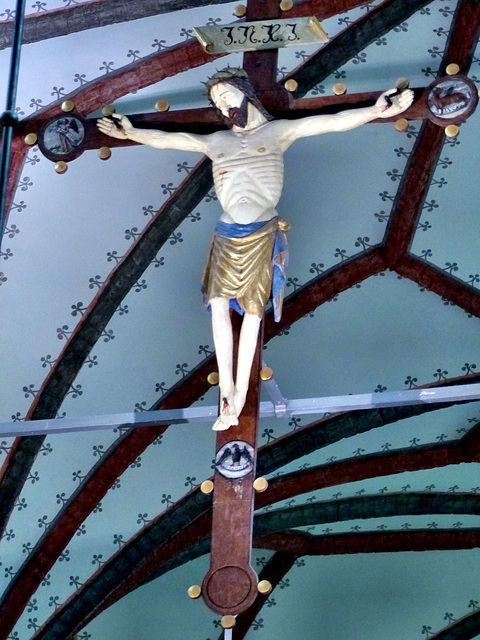Koszalin - Katedra Niepokalanego Poczęcia Najświęt…
Koszalin - Kaplica św. Gertrudy
Darlowo - Rynek
Darlowo - Brama Wysoka
Darlowo - Kościół Matki Bożej
Darlowo - Kościół Matki Bożej
Darlowo - Kościół Matki Bożej
Darlowo - Kościół św. Gertrudy
Ustka
Slupsk
Slupsk - Brama Mlyńska
Slupsk - Kościół św. Jacka
Slupsk - Pomorska Droga św. Jakuba
Slupsk - Kościół św. Jacka
Slupsk - Kościół św. Jacka
Slupsk - Nowa Brama
Slupsk - Kaplica św. Jerzego
Slupsk - Kościół Mariacki
Slupsk - Kościół Mariacki
Slupsk - Kościół św. Mikołaja
Slupsk - Ratusz
Slupsk - Art Nouveau
Lębork - Kościół św. Jakuba
Koszalin - Katedra Niepokalanego Poczęcia Najświęt…
Koszalin - Katedra Niepokalanego Poczęcia Najświęt…
Kołobrzeg - Bazylika konkatedralna Wniebowzięcia N…
Kołobrzeg - Bazylika konkatedralna Wniebowzięcia N…
Kołobrzeg - Bazylika konkatedralna Wniebowzięcia N…
Kołobrzeg - Bazylika konkatedralna Wniebowzięcia N…
Kołobrzeg - Bazylika konkatedralna Wniebowzięcia N…
Kołobrzeg - Bazylika konkatedralna Wniebowzięcia N…
Kołobrzeg - Bazylika konkatedralna Wniebowzięcia N…
Kołobrzeg - Bazylika konkatedralna Wniebowzięcia N…
Kołobrzeg - Bazylika konkatedralna Wniebowzięcia N…
Kołobrzeg - Bazylika konkatedralna Wniebowzięcia N…
Trzebiatów - Hansken
Trzebiatów - Kościół Macierzyństwa Najświętszej Ma…
Trzebiatów - Rynek
Kamień Pomorski - Konkatedra w Kamieniu Pomorskim
Kamień Pomorski - Konkatedra w Kamieniu Pomorskim
Kamień Pomorski - Konkatedra w Kamieniu Pomorskim
Kamień Pomorski - Konkatedra w Kamieniu Pomorskim
Kamień Pomorski - Konkatedra w Kamieniu Pomorskim
Kamień Pomorski - Konkatedra w Kamieniu Pomorskim
Kamień Pomorski - Konkatedra w Kamieniu Pomorskim
Location
See also...
Keywords
Authorizations, license
-
Visible by: Everyone -
All rights reserved
-
45 visits
Koszalin - Katedra Niepokalanego Poczęcia Najświętszej Maryi Panny


After Duke Boleslaw III (aka "Boleslaus the Wry-mouthed") had captured the tonws along the Balitic sea in 1107 the area became part of the Duchy of Pomerania, a vassal state of Poland and later of Denmark in 1185. It became part of the Holy Roman Empire from 1227. In 1266, the growing town was granted a charter (Lübsches Stadtrecht), autonomy and multiple privileges to attract German settlers from the west.
The city became a member of the Hanseatic League in 1386.
As a result of German colonization, the town became mostly German-speaking. In 1516 local Germans enforced a ban on buying goods from Slavic speakers. It was also forbidden to accept native Slavs to craft guilds.
In 1531 riots took place between supporters and opponents of the Protestant Reformation. In 1534 the city became mostly Lutheran under the influence of Johannes Bugenhagen.
The city was granted to Brandenburg-Prussia after the Treaty of Westphalia in 1648.
The "Katedra Niepokalanego Poczęcia Najświętszej Maryi Panny" (Immaculate Conception) was built between 1300 and 1333 as a three-nave basilica of the brick Gothic style. The massive, 56 meter high tower was built on the west side.
From 1534 to 1945 it served as the main church of the Lutheran congregation. Since 1972 it has been the cathedral of the new diocese of Koszalin-Kołobrzeg.
The large crucifix dates from the 14th century.
The city became a member of the Hanseatic League in 1386.
As a result of German colonization, the town became mostly German-speaking. In 1516 local Germans enforced a ban on buying goods from Slavic speakers. It was also forbidden to accept native Slavs to craft guilds.
In 1531 riots took place between supporters and opponents of the Protestant Reformation. In 1534 the city became mostly Lutheran under the influence of Johannes Bugenhagen.
The city was granted to Brandenburg-Prussia after the Treaty of Westphalia in 1648.
The "Katedra Niepokalanego Poczęcia Najświętszej Maryi Panny" (Immaculate Conception) was built between 1300 and 1333 as a three-nave basilica of the brick Gothic style. The massive, 56 meter high tower was built on the west side.
From 1534 to 1945 it served as the main church of the Lutheran congregation. Since 1972 it has been the cathedral of the new diocese of Koszalin-Kołobrzeg.
The large crucifix dates from the 14th century.
- Keyboard shortcuts:
Jump to top
RSS feed- Latest comments - Subscribe to the comment feeds of this photo
- ipernity © 2007-2024
- Help & Contact
|
Club news
|
About ipernity
|
History |
ipernity Club & Prices |
Guide of good conduct
Donate | Group guidelines | Privacy policy | Terms of use | Statutes | In memoria -
Facebook
Twitter

Sign-in to write a comment.